Using Yoga to Quell Anxiety: the Research
This post is part of an ongoing public discussion relating to the scientific research of yoga and follows a two-part online webinar, Yoga and Anxiety, which can be found on our events archive here. Comments are welcome in the comment field provided below this post. All comments are moderated for content and may or may not be published.
Anxiety can be managed—and its mental modifications quelled—through regular yoga practice.
Just before COVID-19 began, I took note in a corporate mindfulness presentation of an attendee’s comment: “We are living in an age of anxiety and overwhelm.” I think about that these days as we enter month eight of a socially distant, pandemic-defined world. If many of us were feeling anxious before the pandemic began, where are we now? What can we learn from the scientific research on yoga and anxiety to understand how to cope with what surely will be at least another year of pandemic-related stresses?
In April, Yoga Alliance kicked off its Scientific Research on Yoga CE Webinars with our Director of Yoga Research and Assistant Professor of Medicine at Harvard Medical School Dr. Sat Bir Singh Khalsa, and with me, for a two-part webinar titled Yoga and Anxiety. In Part 1, we distinguished between anxious feelings that are a “normal part of living” and anxiety disorders. Dr. Khalsa shared the most recent research done on yoga’s effects on both anxiety and anxiety disorders. In his Part 2, we focused on anxiety issues and, sadly, disorders, developing during COVID—and on what yoga can do about them for ourselves, our students, and our loved ones.
Anxiety as “normal” vs. anxiety disorders
Dr. Khalsa stressed that everyday anxiety should be understood as separate from a formal diagnosis made by a qualified professional. “Anxiety is a normal reaction to any stressor,” he said, which can bring us to attention in the moment and focus our energies on, say, solving a problem or planning for an event in the future. When anxiety becomes overwhelming and begins to interfere with daily life, however, this is when we want to dig deeper and seek outside guidance. A formal anxiety-disorder diagnosis comes best from an interview with a psychologist or psychiatrist, of course, and it’s typically characterized by certain markers over a six-month period. The most commonly diagnosed anxiety disorder is Generalized Anxiety Disorder, or GAD, but Panic Disorder, Obsessive Compulsive Disorder (OCD), Social Anxiety Disorder, and specific phobias are also disorders to consider when thinking about how yoga can help you or those you teach.
How does yoga actually work for anxiety and anxiety disorders?
Two things struck me in both webinars. First, as Dr. Khalsa illustrated in his logic model, yoga is an ideal mind-body intervention for anxiety, whether it has escalated into a disorder or is simply what the medical community calls “state” (or right-here-and-now) anxiety. The physical, cognitive, and emotional elements of yoga represent a whole-bodied approach to the tricky mind-body terrain of an anxious state, in which we are lifted out of the moment (and ourselves) with worry and dread over whatever might happen next.
The second thing is that in anxiety (and in depression, often comorbid with anxiety), it’s the content of your thoughts that wreaks havoc on your mind and body and the way they function day in and out. As all of us have experienced this at one time or another; it’s so easy to get trapped inside anxious thoughts without a clear path out. This thought-entrapment, according to scientific measurements, is not just what results from feeling anxious. It is actually part of the disease’s mechanism. Dysfunctional thought patterns are not just symptoms of the disorders but an integral part of the disease process.
There appear to be many ways in which yoga works with anxiety, and “metacognition” is one of them. Used in a psychotherapeutic modality called Cognitive Behavioral Therapy (CBT), it is the process of becoming aware of the patterns of one’s own thoughts and altering them. Metacognition is, in fact, relevant to a modern translation of Sutra 1.2: Yoga Citta Vrtti Nirodhah (yoga is the cessation of the modifications of the mind), Dr. Sat Bir Singh Khalsa pointed out.
In CBT and through metacognition, the patient-practitioner becomes aware of inaccurate or negative thinking and can learn to respond to these thoughts more effectively. In yoga, we do the same. We use the breath and the practice moment by moment to notice what types of thoughts we’re having and how to move with them and through them.
CBT and yoga, according to the research, empower us to learn to react less to our own negative, destructive, anxious thoughts, which compound into more thoughts just like them. From there we can change the content of these thoughts toward healthier, quieter ones.
Three citation highlights:
A 2011 study published in BioPsychoSocial Medicine considered that “if yoga training has a stress-reduction effect and also improves an individual’s mental states for a long time, long-term yoga practitioners may have a better mental state and lower stress-related biochemical indices in comparison to non-experienced participants.” Findings from the study concluded that “long-term yoga training can reduce the scores related to mental health indicators such as self-rated anxiety, anger, and fatigue.”
Stefan G. Hofmann, a leader in the research on yoga and anxiety, published an “Author Manuscript” meta analysis, via the Department of Health and Human Services, on the effects of hatha yoga on anxiety. He and other authors of the paper, which analyzed 17 studies with 501 participants, found hatha yoga to be a promising method for treating anxiety. The study also concluded that more study needs to be done to compare yoga for anxiety against other, more well established treatments for anxiety.
Dr. Khalsa has just published a study on Kundalini Yoga for generalized anxiety disorder (GAD) in JAMA’s The Journal of the American Medical Association Psychiatry. The study, funded by the National Center for Complementary and Integrative Medicine (NCCIH) of the National Institutes of Health, was a randomized clinical trial of 226 adults with generalized anxiety disorder and entailed a 12-week group treatment with either Kundalini yoga or CBT. The study showed that Kudalini and CBT were more effective than the stress education control condition.
Research Citations
- The Effects of Yoga on Anxiety and Stress, Amber W. Li and Caroll-Ann W. Goldsmith, 2012
- A systematic review of yoga for state anxiety: considerations for occupational therapy, 2013
- Profile of mood states and stress-related biochemical indices in long-term yoga practitioners, Kazufumi Yoshihara, Tetsuya Hiramoto, Nobuyuki Sudo, and Chiharu Kubo, 2011
- Yoga Reduces Performance Anxiety in Adolescent Musicians, 2013
- A Yoga-based Program Decreases Physician Burnout in Neonatologists and Obstetricians at an Academic Medical Center, Annette Scheid, Natalie L. Dyer, Jeffery A. Dusek, Sat Bir S. Khalsa, 2020
- Effect of Hatha Yoga on Anxiety: A Meta-analysis, Stefan G. Hofmann, Giovanbattista Andreoli, Joseph K. Carpenter, and Joshua Curtiss, 2016
- Yoga for anxiety: A systematic review and meta-analysis of randomized controlled trials, Holger Cramer, Romy Lauche, Dennis Anheyer, Karen Pilkington, Michael de Manincor, Gustav Dobos, Lesley Ward, 2018
- Hatha yoga for acute, chronic and/or treatment-resistant mood and anxiety disorders: A systematic review and meta- analysis,, 2018
- The Principles and Practice of Yoga in Health Care, Nina K. Vollbehr, Agna A. Bartels-Velthuis, Maaike H. Nauta, Stynke Castelein, Laura A. Steenhuis, H. J. Rogier Hoenders, Brian D. Ostafin, 2016
- Yoga-enhanced cognitive behavioural therapy (Y-CBT) for anxiety management: a pilot study, Manjit K. Khalsa, Julie M. Greiner-Ferris, Stefan G. Hofmann, and Sat Bir S. Khalsa, 2014
- Kundalini Yoga for Generalized Anxiety Disorder: An Exploration of Treatment Efficacy and Possible Mechanisms, M. G. Gabriel, Joshua Curtiss, Stefan G. Hofmann, Sat Bir S. Khalsa, 2018
- Qualitative evaluation of a high school yoga program: Feasibility and perceived benefits, Lisa A.Conboy, Jessica J.Noggle, Jessica L.Frey, Ravi S.Kudesia, Sat Bir S.Khalsa, 2013
- A qualitative examination of yoga for middle school adolescents, Bethany Butzer, Amanda Marie LoRusso, Regina Windsor, Frankye Riley, Kate Frame, Sat Bir S. Khalsa, and Lisa Conboy, 2017

About the Author
Kim Weeks
Certified Iyengar Yoga Teacher and wellness expert, and founder of a wellness consulting and education company called Weeks Well, whose mission is to foster transformation in work and life.
Videos Associated With This Article
Anxiety and Yoga
This video from Yoga Alliance defines anxiety from a clinical perspective, explains the rationale for using yoga as a treatment for anxiety, and compares yoga’s benefits to pharmacological interventions.
CE Workshop | Yoga and Anxiety, Part 1
Dr. Sat Bir Singh Khalsa and Kim Weeks discuss anxiety from a clinical perspective, explain the rationale for using yoga as a treatment for anxiety, and compare yoga’s benefits to pharmacological interventions.
CE Workshop | Yoga and Anxiety, Part 2
Dr. Sat Bir Singh Khalsa and Kim Weeks discuss anxiety from a clinical perspective, explain the rationale for using yoga as a treatment for anxiety, and compare yoga’s benefits to pharmacological interventions.
We welcome your thoughts.
We invite you to share your questions or insights in the comment field below. To ensure quality of conversations on our blog, all submitted comments are held in queue for moderation and review. We’ll do our best to publish your comments as quickly as possible.
Comment Guidelines.
![]() Keep comments concise and on-topic.
Keep comments concise and on-topic.![]() Be courteous.
Be courteous.![]() Review before posting.
Review before posting.![]() Provide references or links to documentation.
Provide references or links to documentation.![]() Avoid serial comments.
Avoid serial comments.


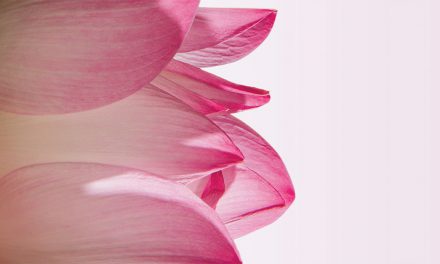
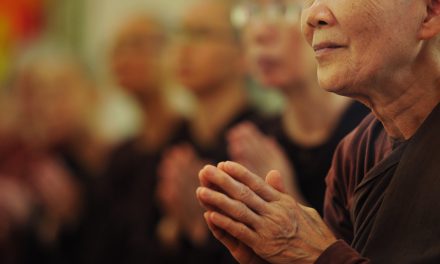
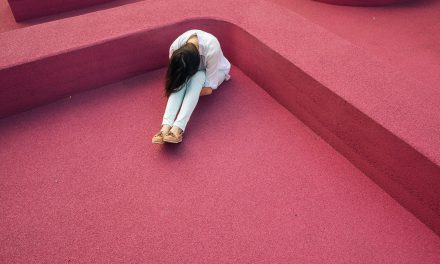
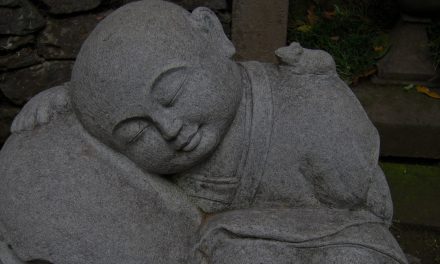
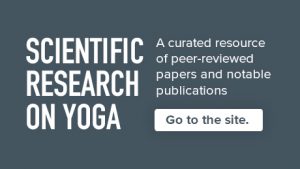

0 Comments